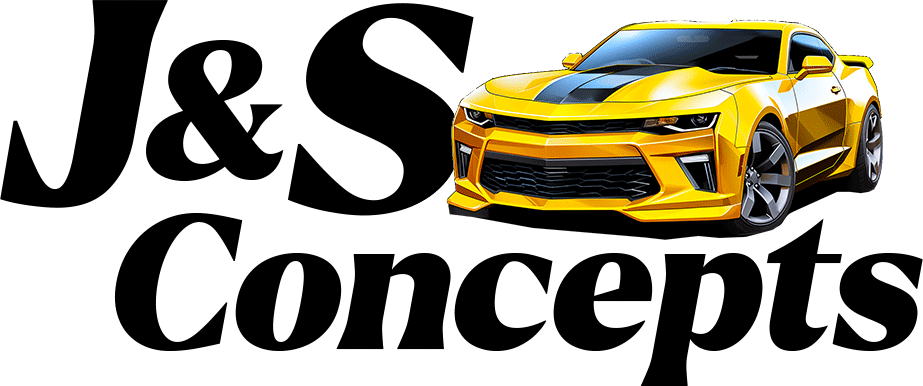What Your Dashboard Is Trying to Tell You
When a warning light appears on your dashboard, it’s your vehicle’s way of telling you something with the engine diagnostics need attention. While some lights signal minor issues, others can point to serious problems that should be addressed right away to avoid costly repairs or unsafe driving conditions.
At J&S Concepts Automotive & Repair, we want you to feel confident behind the wheel. Here’s a helpful guide to the most common warning lights and what they mean.

Check Engine Light (CEL)
What it means: Your vehicle’s onboard diagnostics system (OBD-II) has detected a problem with the engine or emissions system.
Common causes:
- A faulty oxygen sensor or spark plugs
- Loose or damaged gas cap
- Catalytic converter issues
- Emissions system fault
What to do:
If the light is steady, schedule a diagnostic soon. If it’s flashing, pull over safely and call us — this can indicate a serious misfire that could damage the engine.
Oil Pressure Warning Light
What it means: Your engine isn’t receiving adequate oil pressure.
Common causes:
- Low oil level
- Faulty oil pump or pressure sensor
- Oil leaks or clogged filters
What to do:
Stop the vehicle immediately and check your oil level. Driving with low or no oil pressure can destroy your engine. If you’re unsure, call J&S Concepts for help right away.
Battery Warning Light
What it means: There’s a problem with your vehicle’s charging system.
Common causes:
- Failing alternator
- Loose or corroded battery terminals
- Bad battery or damaged wiring
What to do:
If this light comes on while driving, your vehicle is running off battery power and may stall soon. Get to a repair shop as soon as possible.
Engine Temperature Warning Light
What it means: Your engine is overheating.
Common causes:
- Low coolant level
- Failed thermostat
- Radiator or cooling fan issue
What to do:
Pull over immediately and turn off the engine. Let it cool down before checking coolant levels. Driving an overheating engine can cause major damage, like a blown head gasket.
General Warning Light (Triangle or Exclamation Mark)
What it means: This is a catch-all light that varies by vehicle. It often indicates something outside of the engine or transmission — like traction control, low fuel, or a problem detected by a driver assistance system.
What to do:
Refer to your owner’s manual or bring your car to us for a full system scan.
Brake System Warning Light
What it means: There’s a potential issue with the brake system.
Common causes:
- Low brake fluid
- Worn brake pads
- Parking brake engaged
- ABS malfunction
What to do:
If the light stays on after releasing the parking brake, your braking system could be compromised. Have it inspected immediately for your safety.
Other Lights to Know
Here are a few other dashboard lights that deserve your attention:
- ABS Light: Problem with the anti-lock braking system
- Airbag Warning: A fault in the airbag system — may not deploy in a crash
- Traction Control Light: Traction/stability system is active or has a fault
- TPMS (Tire Pressure Monitoring): One or more tires are low on air
- Maintenance Reminder: Time for an oil change or service (based on mileage or time)
Don’t Ignore Warning Lights — We’re Here to Help
Dashboard lights aren’t just suggestions — they’re important alerts meant to protect your car and your safety. At J&S Concepts Automotive & Repair, our trained technicians can perform a full diagnostic scan, explain what the codes mean, and fix the issue before it turns into something bigger. Call us today!
